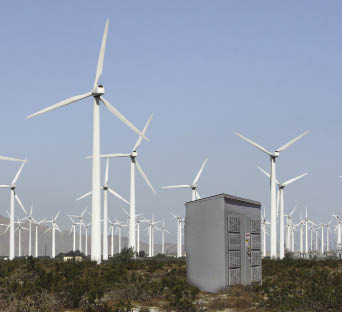
If a Li-ion battery goes into thermal runaway, it can cause a chain reaction in adjacent battery cells. Creating and following standards can reduce fire safety risks.
The growth in use of Lithium ion (Li-ion) batteries also raises fire safety concerns. The batteries provide high-energy density and can be recharged multiple times. Although, they contain no highly volatile, free-lithium metal, they do contain extremely flammable electrolytes, along with lithium ions. The batteries have shown a tendency to overheat, which is usually a pathway to fire. Some causes of overheating include electrical shorting, rapid discharge, overcharging, manufacturers defect, poor design, or mechanical damage. Overheating results in a process called thermal runaway – a reaction within the battery causing the internal temperature and pressure to rise at a quicker rate then can be dissipated.Once one battery cell goes into thermal runaway, it produces enough heat to cause a chain reaction in adjacent battery cells. This action can produce a fire that repeatedly flares up as each battery cell in turn ruptures. The result is the release of flammable electrolytes from the battery. The amount of data relative to this fire behavior is limited, however, predictions can be made to determine when a battery will go into thermal runaway. Creating standard procedures that outline design criteria, planning, storage, and response protocols can go a long way in managing thermal runaway and other fire risks associated with Li-ion batteries.
Standard operating procedures
For the most part, standards that guide the design, development, installation, maintenance, and operation of wind-energy storage are difficult to find. What’s more, practices that would increase safety and ultimately lead to mitigation of destructive fire events simply don’t exist. The National Fire Protection Association presents the most comprehensive collection of data relative to these issue, at least as far as Li-ion is concerned. This is a good starting point for developing an effective risk management process.
Li-ion batteries ignite and burn differently than the common combustibles and, thus, require different suppression approaches. Effective standards might include daily handling guides, maintenance, storage, and battery life cycle. Another standard inclusion is developing a fire suppression system to contain and control the unique fire hazards presented by stored energy configurations. Creating these standards would eliminate the use of standards not designated for wind-energy storage.
Training
Since batteries in wind energy storage configurations present critical challenges, it is recommended that training be included in any risk management strategy. A training program that includes emergency response and standard operating procedures is necessary for companies that use batteries and other energy storage methods. Training can address issues such as battery awareness and battery fire behavior, emergency response procedures, and using battery-focused fire extinguishers.
A few consultancies also specialize in developing battery fire management and suppression strategies. These companies are different from generic fire suppression consultants and distributors because they are well versed in the unique hazards presented by battery energy storage and understand risk management practices that address the energy storage battery fire issues. Until proper standard operating procedures are developed, OEMs, integrators, insurance underwriters, investors, operators, and risk management professionals must take the lead and begin to identify areas that can improve fire and explosion risks. WPE

Ron Butler
Partner
LithFire-X
www.lithfire-x.com
Filed Under: Energy storage, Featured, Turbines




